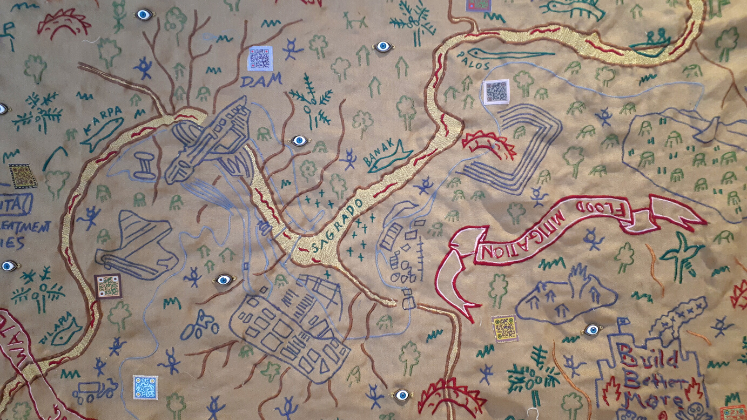
 Collecting representative survey data on large populations of people can be a very time-consuming and expensive undertaking. But it doesn’t have to be; Marco J. Haenssgen and Ern Charoenboon explain how they have used freely available satellite images to survey hard-to-reach communities in Thailand and Laos.
Collecting representative survey data on large populations of people can be a very time-consuming and expensive undertaking. But it doesn’t have to be; Marco J. Haenssgen and Ern Charoenboon explain how they have used freely available satellite images to survey hard-to-reach communities in Thailand and Laos.
Countries all around the world are thinking about how to tackle the growing problem of antibiotic resistance and antimicrobial resistance more generally. The World Bank believes that, should nothing be done about it, the crisis could be responsible for as many as 10 million deaths a year, and estimates that by 2050 drug resistant infections could cause global economic damage on a par with the 2008 financial crisis. There have been a considerable number of education and awareness campaigns but is the message really getting through? And if not, why not? Key to the discovery of long-term solutions is a better understanding of the context around all this – how people in rural parts of poor countries access and use medicines; why they do what they do.
In Thailand and Laos, the issue is right at the top of the public health agenda but only a very small fraction of the population is likely to be aware of the problem, and even those who are aware may have more pressing concerns – like earning money to put food on the table – which don’t permit time to think about what medicines they use or what effect they might be having longer term. Education alone cannot tackle this.
To try to get a better handle on the health behaviours of people in these faraway communities, we spent five months collecting representative survey data from 2,100 villagers in 134 villages in two provinces in Thailand and Laos. We also collected data and interviewed every adult in five villages as part of our efforts to see how information and education about antibiotic resistance is understood or misunderstood and how it can spread in these communities, adding another 4,800 survey interviews.
You may think this sounds like months and months of intensive preparatory work both at home and on the ground. You might also think this sounds like a hugely expensive piece of research to carry out. On the contrary. A major part of our work has been on the methods that can be used to identify, sample, and then survey hard-to-reach populations like these using simple, easy, and free-to-use satellite images.
 Figure 1: Excerpt of satellite map for survey sampling, including enumerated houses in red and selected households in yellow. Source: Bing Maps. (Click to enlarge.)
Figure 1: Excerpt of satellite map for survey sampling, including enumerated houses in red and selected households in yellow. Source: Bing Maps. (Click to enlarge.)
There are lots of researchers using sophisticated satellite packages and software to do this sort of thing but we wanted to see whether we could do it by making use of images from Google and Bing. And that is exactly what we did, with huge savings in both time and money and also, we believe, using a method that was even more effective from a research point of view. It makes possible many research projects that would otherwise be completely unfeasible. The idea originally came from Marco’s PhD research where the usual lack of money and time available to do research overseas got him thinking about ways to get round the problem.
From these maps we can see clearly where people live. Together with publicly available information on villages and towns we can then look at the maps and structures more closely and draw up our sampling frame and select the actual homes you want to visit. Even the remotest settlements are clearly visible, so you are less likely to miss people who may not live right in the centre of a village.
Another key benefit is that you can see and plan the best routes into the areas, saving a lot of time and expense. In fact we estimate that you can easily save a quarter of the cost of a conventional field survey. Depending on the size and scale of your research that could be as little as £5,000 or as much as £50,000.
Using this approach saved us months of work and meant we were working with up-to-date information. We used satellite maps to record 25,000 households in our survey villages from which we selected 3,000 for interviews. Using a more conventional approach would have needed teams of around 20 local people in the field. Instead just the two of us were able to do this part of the work from our desks. It was still a lot of work, but using just a fraction of the labour and time that would otherwise have been required.
Being efficient yet rigorous in the planning stage meant our budget stretched further, enabling us to put in place top-quality data collection – definitely more bang for our buck! Our team even had the time and energy to ford rivers and camp in the survey villages to help us reach a group of people whose voices would otherwise never have been heard; that’s something we take great pride in. In total we have reached 5,900 people from 41 ethnicities, many of whom were deeply grateful for having the opportunity to have their say. The wonders of modern technology meant that we are able to clean and process the data on the fly as we travelled.
As we write this post, we are just wrapping up data collection in Laos but we believe the methods we have employed and the lessons learned will have a major impact in future, encouraging other researchers to be more ambitious in their efforts to reach key, hitherto unheard populations, safe and secure in the knowledge that they won’t bust the budget but their research will still be meaningful and robust.
Further information can be found in “Satellite-aided survey sampling and implementation in low- and middle-income contexts: a low-cost/low-tech alternative”, published in Emerging Themes in Epidemiology (DOI: 10.1186/s12982-015-0041-8). You can also hear more in the National Centre for Research Methods podcast, featuring an interview with the authors.
The authors will be presenting their findings at the forthcoming ESRC Research Methods Festival in Bath in July.
Note: This article gives the views of the authors, and not the position of the LSE Impact Blog, nor of the London School of Economics. Please review our comments policy if you have any concerns on posting a comment below.
About the authors
Marco J. Haenssgen is a Postdoctoral Scientist at the Centre for Tropical Medicine and Global Health and the CABDyN Complexity Centre at Oxford University. He is a social scientist with a background in management and international development and experience in aid evaluation, intergovernmental policymaking, and management consulting. His research relates to interactions between patients and the health system, healthcare-seeking behaviour, social and technological change, and evaluation. He conducts mixed-methods research with a regional focus on Southeast Asia. Current research activities include qualitative research on evolving antibiotic use in rural Thailand and surveys of rural healthcare-seeking behaviour in the context of antibiotic use in rural Thailand and Laos. For updates on Marco’s work, follow @HaenssgenJ on Twitter. His ORCID iD is: 0000-0002-5849-7131.
Ern Charoenboon is a research officer on the project “Antibiotics and Activity Spaces,” funded by the UK Research Council’s AMR Initiative. Based at the Mahidol-Oxford Tropical Medicine Research Unit in Bangkok, she manages qualitative and survey data collection together with AMR-based educational activities. She has a background in biochemistry, public engagement, and youth leadership. Her research interests pertain to the drivers of people’s medicine use and treatment choices, and the unintended consequences of public engagement.







